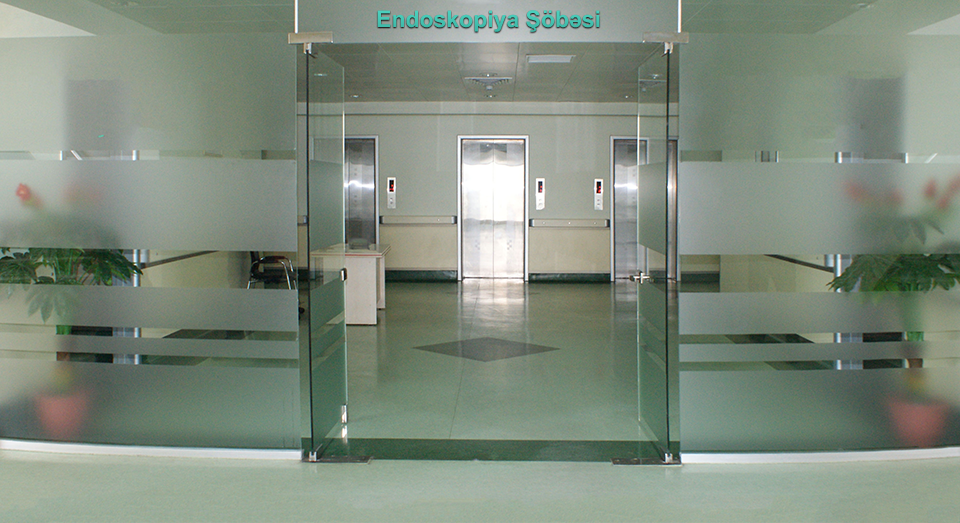Department of Endoscopy

In 1983 year ,National Centre of Oncology organized Department of Endoscopy. Untill 1987 the department was headed by Shiraliyev Oktay Kazim oglu and served as the Republican Diagnostic Center. Until 1994 it was headed by O.P.Lopatina , Z.A.Maqerramova, V.I.Guluev. From 2002 year to present time the Chief of Department is E. I.Ibrahimov. It should be noted that the first qastroscopic examination using rigid and semi rigid qastroscopes were conducted in the late 50s by E.D. Rafibekova-Abdullaeva.As a result of her efforts,her follower V.I.Sadihova organized first Endoscopic office in 1982.
Endoscopic investigation is one of the important diagnostic modalities of modern medicine. This allows to reveal early stages of malignant tumors, the risk of which is increasing with age. And it is recommended to pass endoscopy examination for people older 40 years old.
Department of endoscopy of National Center of Oncology is provided by up to date equipment which make possible both visualization of the upper gastrointestinal and colorectal regions, upper respiratory tract, trachea, bronchi, bladder and performing a wide spectrum of endoscopic treatment manipulations. Installation of new digital video-endoscopic devices with NBI visualization system gives us new possibilities in the diagnostics of stomach and duodenal mucosa diseases like erosions, ulcers and precancerous changes.
Diagnostic endoscopy :
- Esophagogastroduodenoscopy with biopsy (including pH measurement and helicobacter urease test)
- Rectosigmoscopy and total colonoscopy with biopsy
- Endoscopy of upper respiratory tract and bronchoscopy with biopsy
- Cystoscopy with biopsy
- Chromoscopy (special tissue painting method with the aim to see previously invisible lesions of the mucosa)
Curative endoscopy :
- Endoscopic resection of benign tumors of upper and lower respiratory and gastrointestinal tracts.
- Removing of foreign bodies
- Treatment of varicose veins of esophagus and stomach (application of ligatures, vessels sclerosing)
- Endoscopic gastrostomy
- Stopping of bleeding from respiratory and gastrointestinal tracts.
- Dilatation of stenosis of respiratory and gastrointestinal tracts
- Stent placement
We can perform endoscopic manipulations under general anesthesia what helps to avoid unpleasant feelings, scare of patients and gives possibility to carry out several investigations at once. All equipment is undergone high level disinfection and special low temperature sterilization excluding patients’ contamination.
